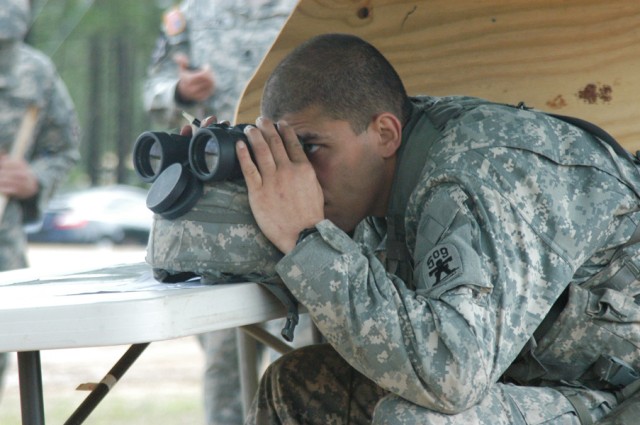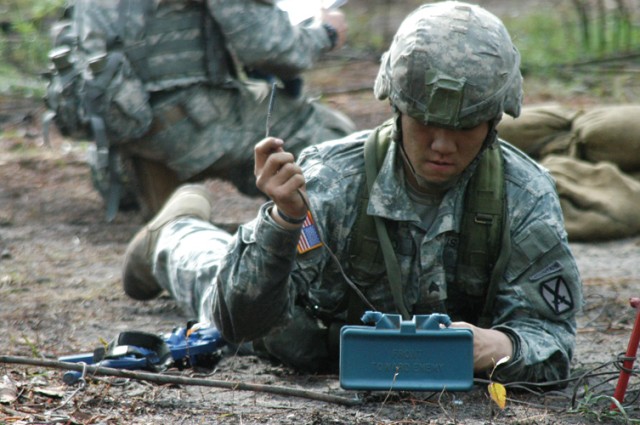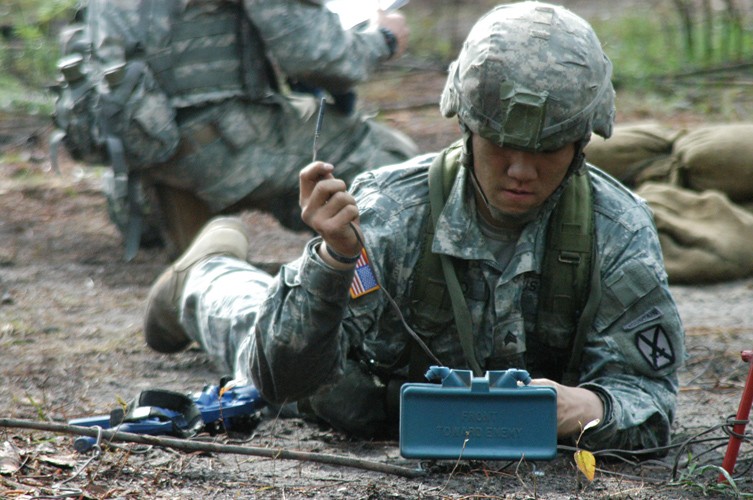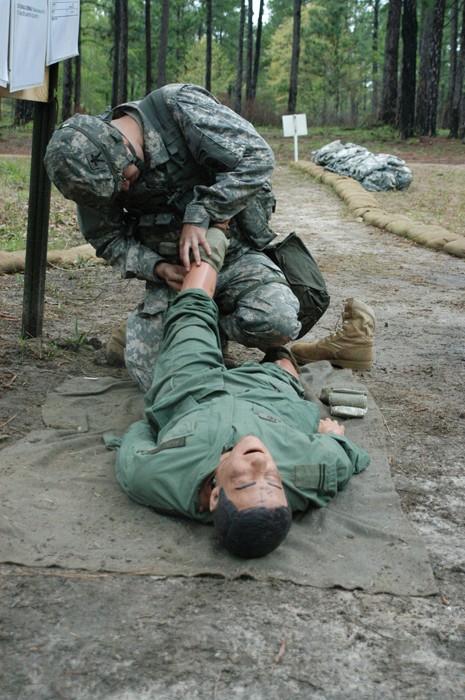Imagine the most difficult final or the most nerve-wracking test you took in school. Soldiers of the 1st Battalion (Airborne), 509th Infantry Regiment, experienced an assessment of the same intensity during the Expert Infantryman Badge test March 16-24.
The EIB is the non-combat equivalent to the combat infantryman badge. The primary difference between the decorations is the CIB is awarded for participation in infantry ground combat, while the EIB is presented for completion of an approved Army course of testing. In 1944, the Army designed the badge to represent the U.S. infantry's tough, hard-hitting role in combat and symbolize proficiency in the infantry arts. The EIB is awarded to Soldiers who hold infantry or Special Forces military occupational specialties. To be awarded the EIB, Soldiers must complete a testing phase which is the culmination of weeks of training, leading to a final evaluation period. The passing rate for EIB tests normally average less than 10 percent. The badge recognizes outstanding infantry Soldiers who demonstrate a high degree of professional skill, expertise and excellence. The EIB evaluation process identifies infantry Soldiers who can expertly maintain, operate and employ their weapons and equipment. The course also enhances training programs in infantry units by providing a tough but attainable goal.
There are 38 components of the test, including a physical fitness test (which has higher standards for passing than the normal Army physical fitness test), a 12-mile ruck march, weapons qualification (any score lower than "expert" results in a failing grade), and other tasks such as radio communications, first aid, and employment of various weapons systems.
Sgt. 1st Class Kyle Beyer served as the EIB site NCOIC and oversaw the administrative aspects of the course. "The EIB is an individual award," he said. "Soldiers are evaluated individually, but they normally progress through the events with the rest of their squad." At the awards ceremony March 24, several squad leaders received additional awards in recognition of their squads' performance.
The test's intensity stems from its disqualification standards. Each Soldier is allowed to fail once at any two events, but a third failure results in disqualification. Soldiers are also eliminated if they fail an event twice. They can take as much time as they need between stations though -- they are only timed during the completion of each task, as certain tasks must be executed within a certain time standard.
"What makes (earning the EIB) difficult is that you have to follow the steps precisely - that's what gets people: staying in sequence and following directions," Beyer said.
"The EIB is a mark of excellence for infantrymen," Beyer said. "It indicates that you are able to perform all of your infantry tasks to a prescribed standard under test conditions - and the test conditions produce a high level of stress. Anyone who has (the EIB) can tell you it is not easy to get."
Of 144 Soldiers who tried for the EIB during the 509th test, 102 obtained the badge. Among those tested were Soldiers from the 4th Brigade Combat Team, 10th Mountain Division, and the 162nd Infantry Brigade. Command Sgt. Maj. Doug Matti, 1-509th, congratulated the badge recipients at the award ceremony, and mentioned that the event had training value even for the Soldiers who were eliminated. "Those who did not get (the EIB) are better Soldiers now and better prepared to fight," he said.






Social Sharing